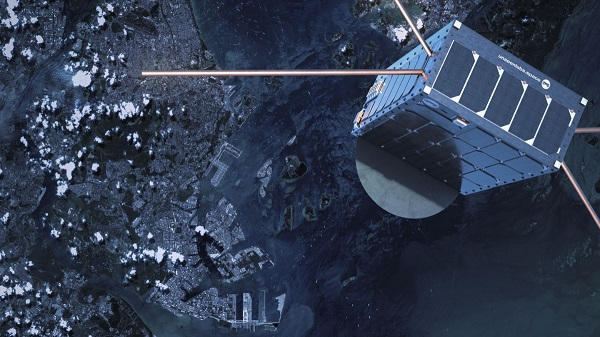
Maritime monitoring from space: France’s Unseenlabs wants to put six more satellites into orbit
automatic identification system [AIS – Automatic Identification System]whose interest is to promote the safety of maritime navigation, makes it possible to follow the movement of civilian ships … except when some of them want to remain muted by their often illicit activities [pêche non autorisée, trafics…].
Moreover, the data collected via this device is not entirely reliable as it can be faked. Moreover, military vessels could pass themselves off as merchant ships by usurping the latter’s AIS identifiers…
Hence the support of the Ministry of the Armed Forces, through its Definvest investment fund, to the young Rennes company Unseenlabs, which has developed a solution based on a constellation of nanosatellites capable of detecting radio frequency signals. [RF]ie, electromagnetic emissions from electronic systems on board ships. Obviously, this technology can detect all surface ships, including those that do not want to be seen, regardless of weather conditions.
This year, Unseenlabs’ constellation has grown with the BRO-6 and BRO-7 nanosatellites being placed in orbit. [BRO pour Breizh Reconnaissance Orbiter]Thanks to American SpaceX and New Zealander Rocket Lab. In 2023, Breton intends to pick up the pace.
In fact, next January the BRO-8 nanosatellite will take off from Cape Canaveral, aboard a SpaceX Falcon 9 rocket, as part of the Transporter-6 mission. Five more should follow after that.
In 2023, 6 additional satellites will be ready for takeoff. The company said in a statement that Unseenlabs will continue to expand its collection of data collection across the region of interest multiple times per day to support commercial and government applications.
And to add: “The technology aboard Unseenlabs Constellation distinguishes all of these transmitters by geolocating them in a precise time space allowing each vessel at sea to obtain a unique signature, or fingerprint, to monitor its position at sea. This capability is essential for government and commercial uses and helps In monitoring areas such as the Baltic Sea [surveillance des gazoducs]and the Gulf of Guinea [piraterie, trafic, plateformes offshore] or the Arabian Sea [pêche illégale].
Specifically, with regard to the Baltic Sea, if an Unseenlabs satellite, which has collected “tens of thousands of electromagnetic signatures” since 2019, was ordered at the time of the Nord Stream 1 and Nord Stream 2 gas pipeline sabotage, in September, so no Doubt we’ll have a more accurate idea of who’s responsible. Because, in the meantime, and According to the Washington Postthere is no evidence that would designate Russia with certainty… Even sources from the daily newspaper estimated that it might be impossible to know who carried out this coup…

“Organizer. Social media geek. General communicator. Bacon scholar. Proud pop culture trailblazer.”
